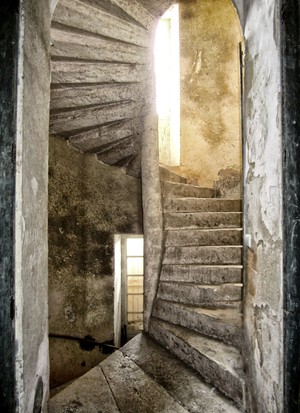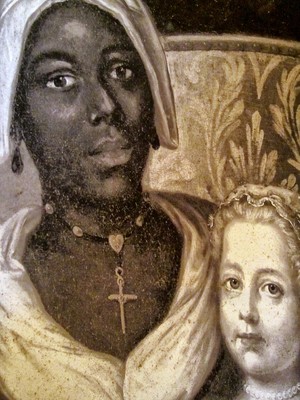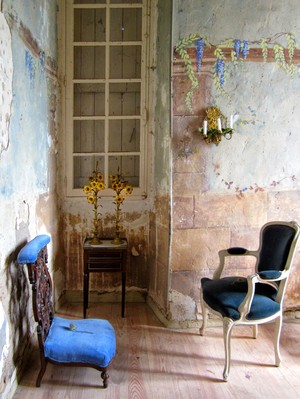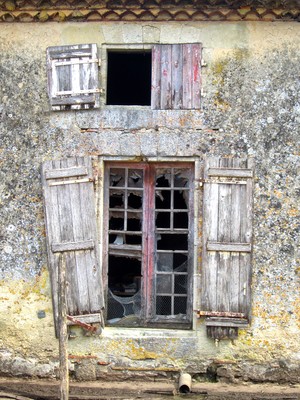A Labor of Love – Chateau de Caumale


- SUBSCRIBE
- ALREADY SUBSCRIBED?
BECOME A BONJOUR PARIS MEMBER
Gain full access to our collection of over 5,000 articles and bring the City of Light into your life. Just 60 USD per year.
Find out why you should become a member here.
Sign in
Fill in your credentials below.
 Four years ago, while driving through the countryside northeast of my house in Ayzieu, I stopped to photograph a magnificent chateau in complete disrepair in the village of Gabarret-Escalans Prominently displayed on an old, weathered stone gate post was a historical monument designation for the Chateau de Caumale, so I ventured down the long, rutted driveway flanked by enormous dead oak trees. Cows and geese roamed across the front lawns. I learned from the caretaker, who was renting the property for his animals, that a Parisian family owned the chateau and, as far as he knew, had no intention of rehabilitating it. What a pity we both thought out loud, punctuating our dismay with gallic shrugs.
Four years ago, while driving through the countryside northeast of my house in Ayzieu, I stopped to photograph a magnificent chateau in complete disrepair in the village of Gabarret-Escalans Prominently displayed on an old, weathered stone gate post was a historical monument designation for the Chateau de Caumale, so I ventured down the long, rutted driveway flanked by enormous dead oak trees. Cows and geese roamed across the front lawns. I learned from the caretaker, who was renting the property for his animals, that a Parisian family owned the chateau and, as far as he knew, had no intention of rehabilitating it. What a pity we both thought out loud, punctuating our dismay with gallic shrugs.
 I was delightfully surprised this past September during the weekend of Patrimoine (French Heritage Days – when all of the historical, cultural and religious sites throughout France are open to the public for free), to be invited by a friend on the Patrimoine committee from a nearby village, to join her and a group for a private tour of the Chateau de Caumale which was currently undergoing restoration.
I was delightfully surprised this past September during the weekend of Patrimoine (French Heritage Days – when all of the historical, cultural and religious sites throughout France are open to the public for free), to be invited by a friend on the Patrimoine committee from a nearby village, to join her and a group for a private tour of the Chateau de Caumale which was currently undergoing restoration.
I arrived on a beautiful sunny day, white clouds billowing in the azure blue sky. New generations of cows and geese were still wandering across the front lawns. One of the owners, Geneviève Fabre, led the tour which took 2 hours. From the front yard we could clearly see that the first phase of restoration included the roof of the chateau and the 5 towers. Once we crossed the threshold of the main door of the fifth tower we stepped into centuries of history. Geneviève told us the chateau was built on a Gallo-Roman site and the oldest surviving part is the 12th century foundation. Up a spiral stone staircase we crept in awe. At the first floor landing we gathered and were told a history of the house.
 The main chateau structure dates from the 15th – 17th centuries. It was then known as the Castle of Gabardan, the stronghold of Gaston Phébus and Jeanne d’Albret, the mother of Henri IV, beloved King of France (1553 – 1610). The chateau figured prominently in the 100 Years War and the Wars of Religion. Louis XIV (1658 – 1715) designated it a “Noble House” in 1666 and in 1758 Louis XV (1715 – 1774) promoted it to a “Noble Castle”. At the beginning of the 19th century, Caumale passed to the hands of Governor Rochambeau who was involved with the Haitian revolution. He followed in the footsteps of Gabriel de Clieu who brought the first coffee tree seeds to Saint Domingue (Santo Domingo) Haiti and they were both involved with the Delisle-Duverger plantations of coffee, cocoa, cotton, indigo, tobacco, spices and sugar cane in Cuba, as well. Naturally, the plantations were worked by slaves, some of whom returned to Caumale with the harvests. The indigo dyed door jambs and doors of the first floor rooms hold name plaques of each young, female, black, slave maid that slept within. And somewhere within the secret folds of family stories was the inspiration for Alexandre Dumas’, The Count of Monte Cristo.
The main chateau structure dates from the 15th – 17th centuries. It was then known as the Castle of Gabardan, the stronghold of Gaston Phébus and Jeanne d’Albret, the mother of Henri IV, beloved King of France (1553 – 1610). The chateau figured prominently in the 100 Years War and the Wars of Religion. Louis XIV (1658 – 1715) designated it a “Noble House” in 1666 and in 1758 Louis XV (1715 – 1774) promoted it to a “Noble Castle”. At the beginning of the 19th century, Caumale passed to the hands of Governor Rochambeau who was involved with the Haitian revolution. He followed in the footsteps of Gabriel de Clieu who brought the first coffee tree seeds to Saint Domingue (Santo Domingo) Haiti and they were both involved with the Delisle-Duverger plantations of coffee, cocoa, cotton, indigo, tobacco, spices and sugar cane in Cuba, as well. Naturally, the plantations were worked by slaves, some of whom returned to Caumale with the harvests. The indigo dyed door jambs and doors of the first floor rooms hold name plaques of each young, female, black, slave maid that slept within. And somewhere within the secret folds of family stories was the inspiration for Alexandre Dumas’, The Count of Monte Cristo.
 We flocked into room after room following our hostess, in speechless wonder. Antique crystal and china was randomly stacked in cabinets or haphazardly displayed. Dust covered chandeliers hung from the middle of oak beamed ceilings. Period furniture sat under protective sheets. Delicately painted frescos of songbirds in an interior chapel are so realistically realized I was transported to the garden trellis upon which they hovered and could almost hear them sing.
We flocked into room after room following our hostess, in speechless wonder. Antique crystal and china was randomly stacked in cabinets or haphazardly displayed. Dust covered chandeliers hung from the middle of oak beamed ceilings. Period furniture sat under protective sheets. Delicately painted frescos of songbirds in an interior chapel are so realistically realized I was transported to the garden trellis upon which they hovered and could almost hear them sing.
Outside, the buildings surrounding the enormous court yard await attention, the last on their list to be renovated. An enormous barn containing gigantic oak barrels used to age Armagnac from the chateau’s surrounding vineyards is home to gaggles of geese and roosting chickens. Workmen and piles of debris fill the interior courtyard. What was once the colonial flower and vegetable garden is a forlorn field of mauvaises herbes.
I was enormously pleased to have been given the privilege of seeing this incredible building that was once a home rich with the history of kings and continents and overwhelmed by what seems the insurmountable task of restoration by the Fabre family. Though a labor of love, it is daunting nonetheless.
 The main funding source for this extraordinary project is remarkably called The French Heritage Society, remarkable because it’s an American non-profit organization begun in 1982 whose sole purpose is the protection of the architectural heritage of French buildings in France and the United States. Thankfully, they raise funds for the restoration of buildings like the Chateau de Caumale.
The main funding source for this extraordinary project is remarkably called The French Heritage Society, remarkable because it’s an American non-profit organization begun in 1982 whose sole purpose is the protection of the architectural heritage of French buildings in France and the United States. Thankfully, they raise funds for the restoration of buildings like the Chateau de Caumale.
For information about the chateau please contact www.chateaudecaumale.fr or www.frenchheritagesociety.org
More in Chateau de Caumale, France travel, The French Heritage


